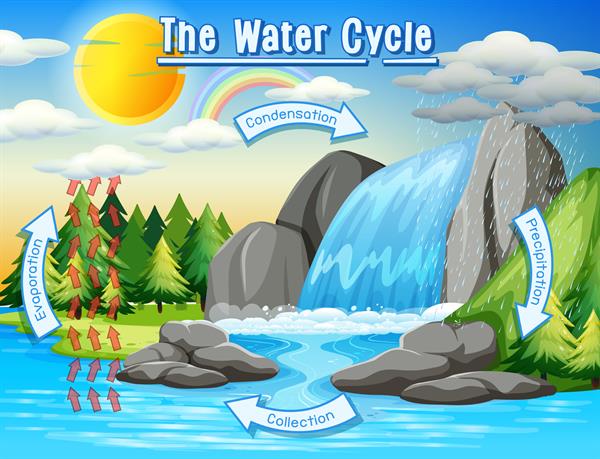
PUMPA - SMART LEARNING
எங்கள் ஆசிரியர்களுடன் 1-ஆன்-1 ஆலோசனை நேரத்தைப் பெறுங்கள். டாப்பர் ஆவதற்கு நாங்கள் பயிற்சி அளிப்போம்
Book Free DemoWater Cycle
What is the water cycle?
The constant movement of water from the earth to the atmosphere as water vapor, and back to earth as rain is known as the water cycle.
The sun and the water bodies such as the oceans, seas, rivers and lakes are the components of the water cycle.
What happens during this cycle?
During the day time, a portion of the earth's surface gets heated up due to the heat produced by the sun.

The water present in this portion of the earth evaporates as water vapor and moves into the atmosphere. Later, it cools down and returns to the earth in the form of rain contributing to rivers, streams and underground water.
Water that returns to the earth does not have any salts with it, and hence can be used in our daily life. It is because when the saltwater vaporizes, it loses its salinity.
The various processes involved in the water cycle
Three significant processes that are involved in the water cycle are; Evaporation, Transpiration and Condensation.
Evaporation:
The process in which the water converts into water vapor due to heat is known as evaporation.
It is process through which the saline water vaporizes and reaches the atmosphere after losing its salts.
Transpiration:
The release of the remaining water into the air by the plants is known as transpiration.
Important!
We can agree that water vapor enters the atmosphere by the processes of evaporation and transpiration.
Condensation:
Through the process of condensation, the water returns to the earth in the form of rain.
The process by which a vapour becomes a liquid by cooling down is known as condensation.
This is the process through which the water returns back to the earth in the form of rain, snow or hail. The water vapor cools down and forms water droplets that come closer together and form clouds.
Precipitation:
When the size of these droplets increase they fall on the earth as rainfall. This is known as precipitation.
When the size of these droplets increase they fall on the earth as rainfall. This is known as precipitation.